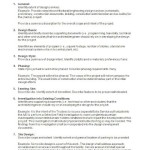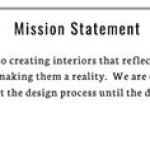What Is Interior Monologue in Literature?
Interior monologue, also known as stream of consciousness, is a literary technique that delves into the internal thoughts, feelings, and sensations of a character. It presents the character’s unfiltered and often chaotic inner world, giving readers direct access to their consciousness. This technique allows writers to explore the complexities of human psychology, revealing hidden motives, anxieties, and desires that might not be explicitly expressed in dialogue or action.
Direct vs. Indirect Interior Monologue
Interior monologue can be employed in two primary ways:
Direct Interior Monologue: This form presents the character’s thoughts directly to the reader, often without any punctuation or grammatical structure to indicate the boundaries between individual thoughts. The reader experiences the character’s mind as a continuous flow, mimicking the natural rhythm of human consciousness. This technique often uses first-person narration, allowing the reader to feel intimately connected to the character's inner world.
Indirect Interior Monologue: This form presents the character’s thoughts from a third-person perspective, often with more conventional grammar and punctuation. The narrator will still provide access to the character’s inner world, but the thoughts are presented in a more structured and controlled way. This technique allows for greater objectivity and can be used to explore the character's thoughts from an external perspective.
Key Features of Interior Monologue
Interior monologue is characterized by several key features:
Non-Linearity
Unlike traditional narrative structures, interior monologue often presents thoughts and feelings in a non-linear fashion. The character’s mind may jump from one topic to another, associating ideas and memories in a seemingly random way. This technique reflects the chaotic and fragmented nature of human thought processes.
Free Association
Interior monologue often employs free association, where thoughts and memories are linked together through loose connections and associations. This allows the writer to explore the complex and often irrational workings of the character’s mind. It also provides a realistic portrayal of how thoughts flow naturally.
Subjectivity
Interior monologue is inherently subjective, as it presents the character’s perspective on the world, unfiltered by the narrator or any external perspective. This allows the reader to understand the character's biases, emotions, and unique way of interpreting the world.
Examples of Interior Monologue in Literature
Interior monologue has been a significant literary technique throughout history, with notable examples in the works of many prominent authors:
- James Joyce: Ulysses (1922) is considered one of the most famous examples of stream of consciousness. It follows the day-to-day experiences of Leopold Bloom, capturing his internal thoughts and feelings in a remarkably realistic and detailed manner.
- Virginia Woolf: Mrs. Dalloway (1925) utilizes interior monologue to explore the inner lives of multiple characters, highlighting the complexities of human consciousness and societal constraints.
- William Faulkner: The Sound and the Fury (1929) employs interior monologue to present the fragmented perspectives of four different characters, each with their own unique interpretation of the same events.
- Fyodor Dostoevsky: Notes from Underground (1864) features a nameless narrator who uses interior monologue to express his alienation, existential anxieties, and profound sense of self-loathing.
- Salman Rushdie: Midnight’s Children (1981) incorporates interior monologue to depict the thoughts and memories of Saleem Sinai, a character whose life is intertwined with the history of India.
These examples illustrate the diverse ways in which interior monologue can be utilized to provide a rich and multifaceted exploration of human experience.

Interior Monologue Examples The Fine Print

The Second Person Internal Monologue By Eleanor Stern

Interior Monologue As A Narrative Device In The Parables Of Le

Interior Monologue In Fiction Writing Write On The World

The Do S And Don Ts Of Internal Monologue Helping Writers Become Authors

Exploring Interior Monologues In Literature

Interior Monologue Literary Terms For 12 Class In Description

Interior Monologue Definition And Examples Poem Ysis

Inner Monologue Tv Tropes

Inner Monologue Examples Characters Lives Nownovel








